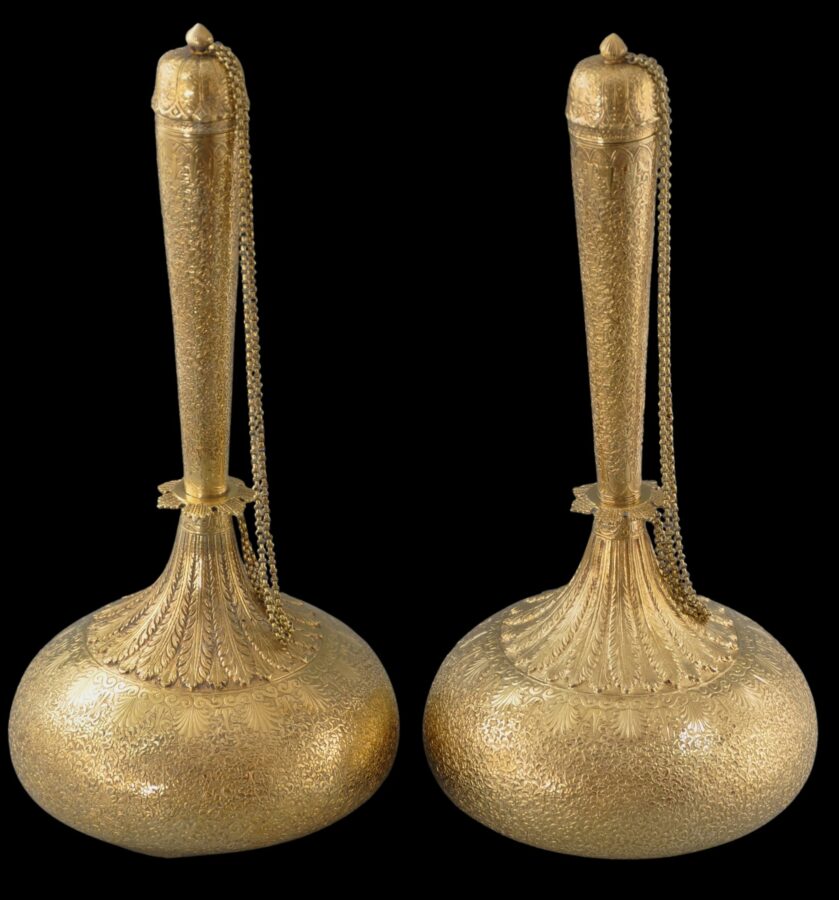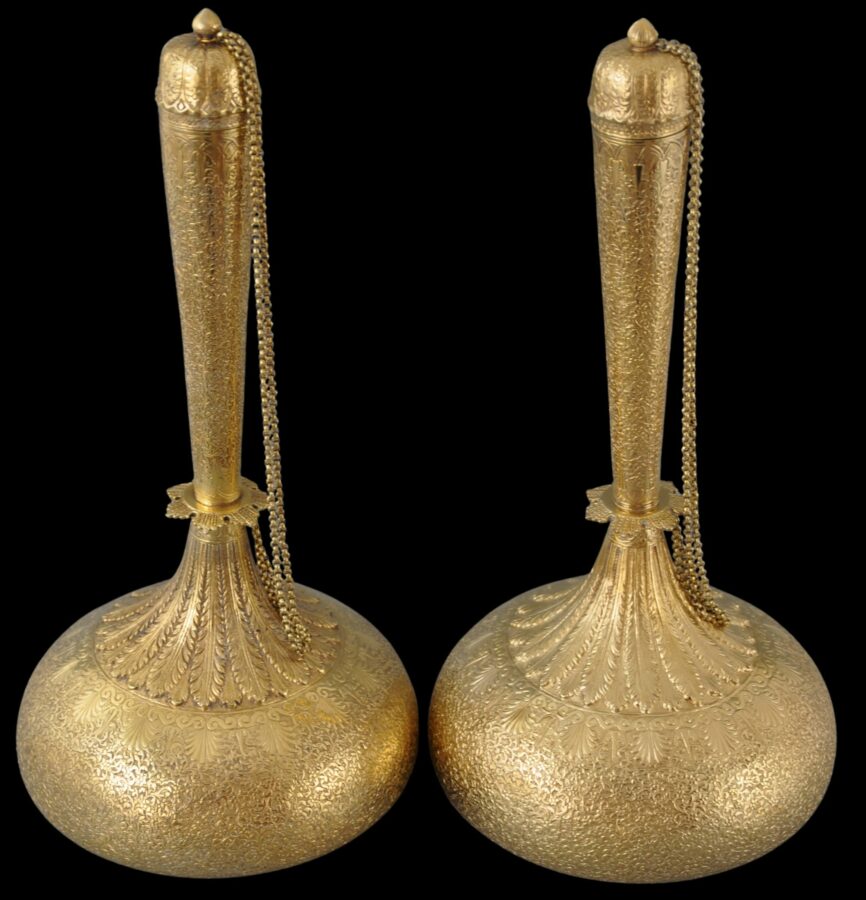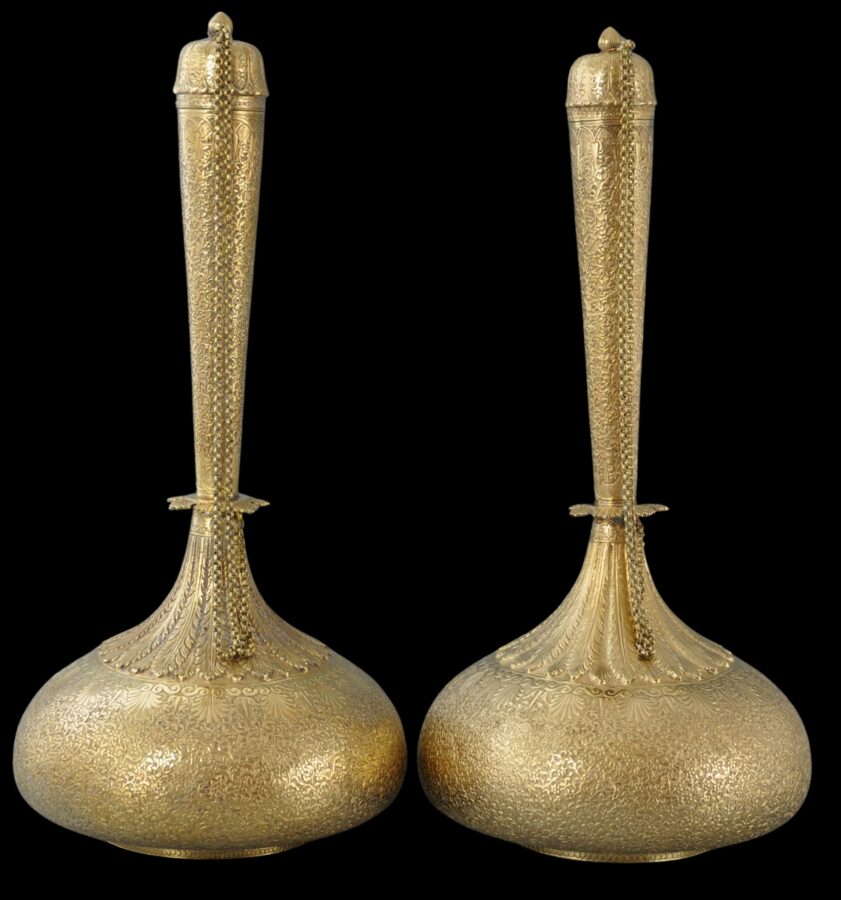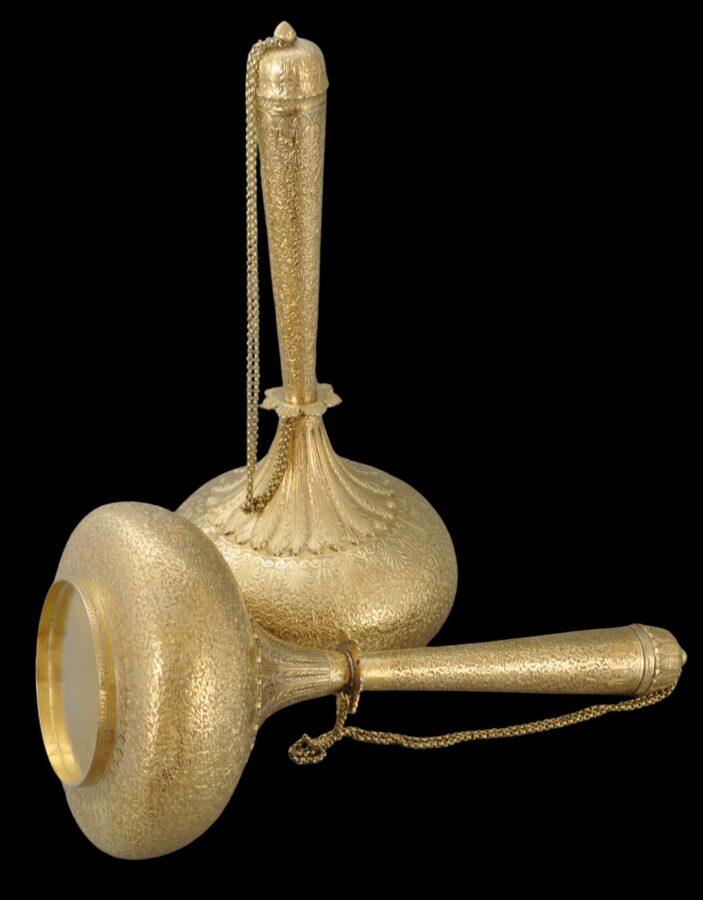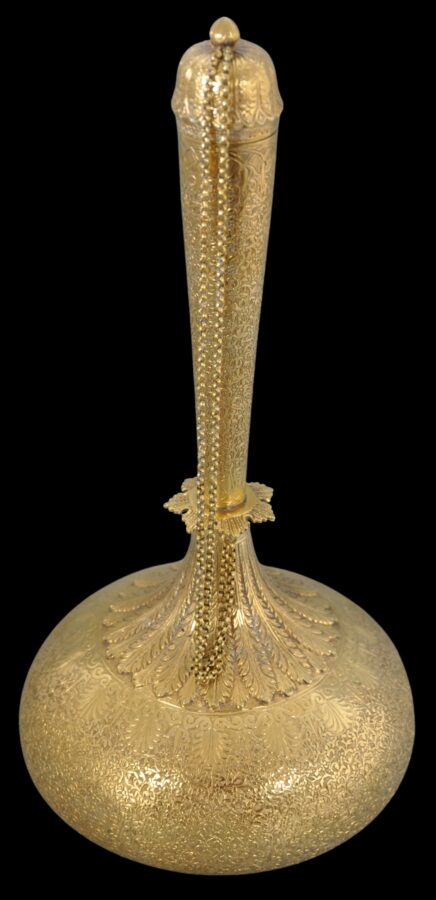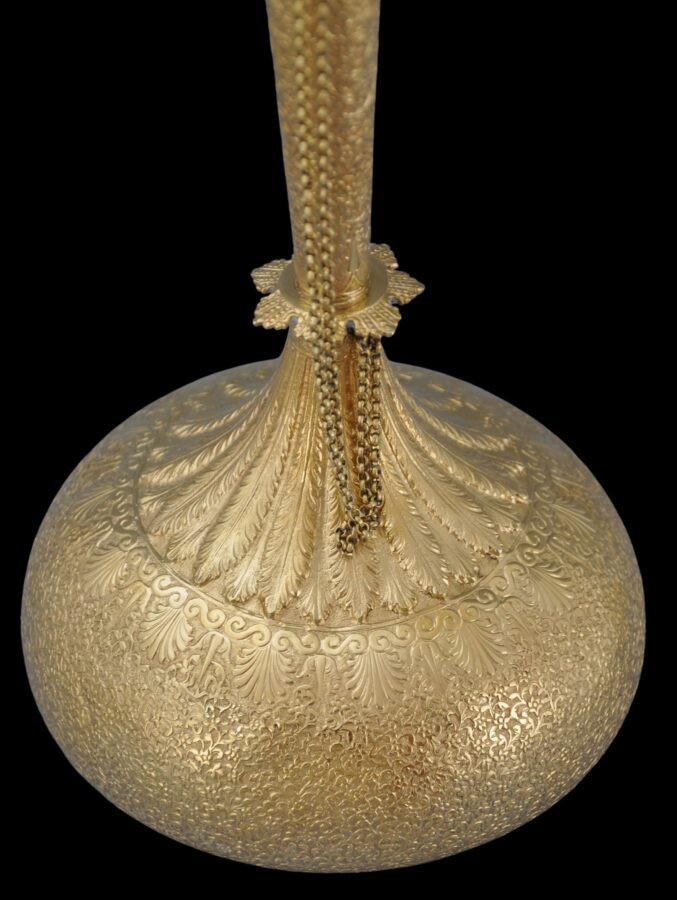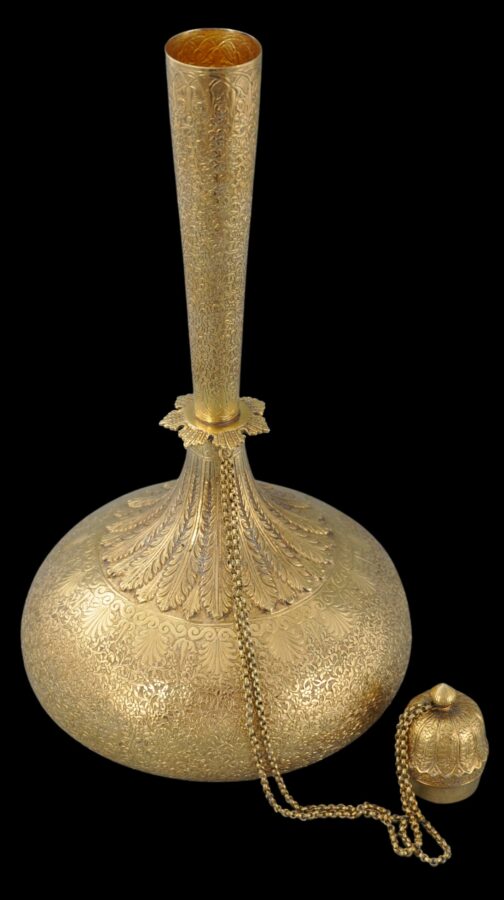This elegant and tall pair of silver wine flasks (surai or surahi) have been finely chased all over and heavily gilded (gold-plated).
Each stands on a low ring foot and has a mallet-form with a flattened, spherical body, and a thin, tapering neck that widens towards the mouth. Each neck has a leafy collar to which a fine double chain is attached. The chain connects to the domed stopper surmounted by a bud-like finial. The chains drape down the sides of the flasks in a particularly elegant fashion. The stopper is chased with acanthus leaf motifs.
The body of each is chased densely with the ‘coriander flower’ (dhaniya) pattern, a pattern that was used by silversmiths in both Lucknow and Kashmir during the late nineteenth century. This is beneath a rococo-like scallop shell or palmette border, above which there is a wide band of cascading acanthus leaves which leads to the neck. The neck itself also is decorated with the coriander leaf pattern.
See Birdwood (1880, plate 5) for a similar, gilded flask. Birdwood comments that the surais produced in Lucknow are very similar to those produced in Kashmir and ‘evidently’ are derived from them.
This is a magnificent pair, and among the finest silverware from colonial Lucknow that we have encountered.
The two flasks have come from Pryce Family, Gunley Hall, Wales. Several members of the Pryce family had an association with colonial India, which perhaps explains the provenance of the pair. Lt.-Col. Douglas Davidson Pryce (1848–1923) served in India. His son, who would become General Sir Henry Edward ap Rhys Pryce, KCB, CMG, DSO (1874-1950), was born in India, and was a member of the British expedition to Tibet, (the ‘Younghusband expedition’), 1903–04.

Above: the leaves and flowers of the coriander plant which provide inspiration for the decoration on the flasks here.
References
Birdwood, G., The Industrial Arts of India, 1880.
Dehejia, V., Delight in Design: Indian Silver for the Raj, Mapin, 2008.
Meghani, K., Splendours of the Subcontinent: A Prince’s Tour of India 1875-6, Royal Collection Trust, 2017.



